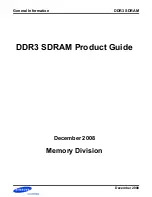
4.2 Reset
4.2.1 Overview
A reset is the highest-priority exception. When the
RES
pin goes low, all processing halts and the
chip enters the reset state. A reset initializes the internal state of the CPU and the registers of the
on-chip supporting modules. Reset exception handling begins when the
RES
pin changes from
low to high.
The chip can also be reset by overflow of the watchdog timer. For details see section 12,
Watchdog Timer.
4.2.2 Reset Sequence
The chip enters the reset state when the
RES
pin goes low.
To ensure that the chip is reset, hold the
RES
pin low for at least 20 ms at power-up. To reset the
chip during operation, hold the
RES
pin low for at least 10 system clock (ø) cycles. See appendix
D.2, Pin States at Reset, for the states of the pins in the reset state.
When the
RES
pin goes high after being held low for the necessary time, the chip starts reset
exception handling as follows.
•
The internal state of the CPU and the registers of the on-chip supporting modules are
initialized, and the I bit is set to 1 in CCR.
•
The contents of the reset vector address (H'0000 to H'0003) are read, and program execution
starts from the address indicated in the vector address.
Figure 4-2 shows the reset sequence in modes 1 and 3. Figure 4-3 shows the reset sequence in
modes 2 and 4. Figure 4-4 shows the reset sequence in mode 6.
73
www.DataSheet4U.com















































